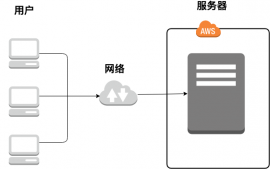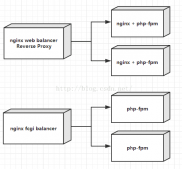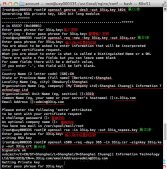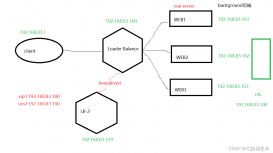前言
这篇文章是收集我在工作中经常会用到的nginx相关知识点,本文并不是基础知识的讲解更多的是一些方案中的简单实现。
location的匹配规则
- = 表示精确匹配。只有请求的url路径与后面的字符串完全相等时,才会命中。
- ^~ 表示如果该符号后面的字符是最佳匹配,采用该规则,不再进行后续的查找。
- ~ 表示该规则是使用正则定义的,区分大小写。
- ~* 表示该规则是使用正则定义的,不区分大小写。
注意的是,nginx的匹配优先顺序按照上面的顺序进行优先匹配,而且注意的是一旦某一个匹配命中直接退出,不再进行往下的匹配
剩下的普通匹配会按照最长匹配长度优先级来匹配,就是谁匹配的越多就用谁。
|
1
2
3
4
5
6
7
8
9
10
11
12
13
14
15
|
server { server_name website.com; location /document { return 701; } location ~* ^/docume.*$ { return 702; } location ~* ^/document$ { return 703; }}curl -I website.com:8080/document 702# 匹配702 因为正则的优先级更高,而且正则是一旦匹配到就直接退出 所以不会再匹配703 |
|
1
2
3
4
5
6
7
8
9
10
11
12
13
14
15
16
|
server { server_name website.com; location ~* ^/docume.*$ { return 701; } location ^~ /doc { return 702; } location ~* ^/document$ { return 703; }}curl http://website.com/documentHTTP/1.1 702# 匹配702 因为 ^~精确匹配的优先级比正则高 也是匹配到之后支持退出 |
|
1
2
3
4
5
6
7
8
9
10
|
server { server_name website.com; location /doc { return 702; } location /docu { return 701; }}# 701 前缀匹配匹配是按照最长匹配,跟顺序无关 |
history模式、跨域、缓存、反向代理
|
1
2
3
4
5
6
7
8
9
10
11
12
13
14
15
16
17
18
19
20
21
22
23
24
25
26
27
28
|
# html设置history模式location / { index index.html index.htm; proxy_set_header Host $host; # history模式最重要就是这里 try_files $uri $uri/ /index.html; # index.html文件不可以设置强缓存 设置协商缓存即可 add_header Cache-Control 'no-cache, must-revalidate, proxy-revalidate, max-age=0';}# 接口反向代理location ^~ /api/ { # 跨域处理 设置头部域名 add_header Access-Control-Allow-Origin *; # 跨域处理 设置头部方法 add_header Access-Control-Allow-Methods 'GET,POST,DELETE,OPTIONS,HEAD'; # 改写路径 rewrite ^/api/(.*)$ /$1 break; # 反向代理 proxy_pass http://static_env; proxy_set_header Host $http_host;}location ~* \.(?:css(\.map)?|js(\.map)?|gif|svg|jfif|ico|cur|heic|webp|tiff?|mp3|m4a|aac|ogg|midi?|wav|mp4|mov|webm|mpe?g|avi|ogv|flv|wmv)$ { # 静态资源设置七天强缓存 expires 7d; access_log off;} |
以目录去区分多个history单文件
因为不可能每一个项目开启一个域名,仅仅指向通过增加路径来划分多个网站,比如:
- www.taobao.com/tmall/login访问天猫的登录页面
- www.taobao.com/alipay/login访问支付宝的登录页面
|
1
2
3
4
5
6
7
8
9
|
server { listen 80; server_name taobao.com; index index.html index.htm; # 通过正则来匹配捕获 [tmall|alipay]中间的这个路径 location ~ ^/([^\/]+)/(.*)$ { try_files $uri $uri/ /$1/dist/index.html =404; }} |
负载均衡
基于upstream做负载均衡,中间会涉及一些相关的策略比如ip_hash、weight
|
1
2
3
4
5
6
7
8
|
upstream backserver{ # 哈希算法,自动定位到该服务器 保证唯一ip定位到同一部机器 用于解决session登录态的问题 ip_hash; server 127.0.0.1:9090 down; (down 表示单前的server暂时不参与负载) server 127.0.0.1:8080 weight=2; (weight 默认为1.weight越大,负载的权重就越大) server 127.0.0.1:6060; server 127.0.0.1:7070 backup; (其它所有的非backup机器down或者忙的时候,请求backup机器) } |
灰度部署
如何根据headers头部来进行灰度,下面的例子是用cookie来设置
如何获取头部值在nginx中可以通过$http_xxx来获取变量
|
1
2
3
4
5
6
7
8
9
10
11
12
13
14
15
16
17
18
19
20
21
22
23
24
25
26
27
28
29
|
upstream stable { server xxx max_fails=1 fail_timeout=60; server xxx max_fails=1 fail_timeout=60; }upstream canara { server xxx max_fails=1 fail_timeout=60;}server { listen 80; server_name xxx; # 设置默认 set $group "stable"; # 根据cookie头部设置接入的服务 if ($http_cookie ~* "tts_version_id=canara"){ set $group canara; } if ($http_cookie ~* "tts_version_id=stable"){ set $group stable; } location / { proxy_pass http://$group; proxy_set_header Host $host; proxy_set_header X-Real-IP $remote_addr; proxy_set_header X-Forwarded-For $proxy_add_x_forwarded_for; index index.html index.htm; }} |
优雅降级
常用于ssr的node服务挂了返回500错误码然后降级到csr的cos桶或者nginx中
优雅降级主要用error_page参数来进行降级指向备用地址。
|
1
2
3
4
5
6
7
8
9
10
11
12
13
14
15
16
17
18
19
20
21
22
23
24
25
26
|
upstream ssr { server xxx max_fails=1 fail_timeout=60; server xxx max_fails=1 fail_timeout=60; }upstream csr { server xxx max_fails=1 fail_timeout=60; server xxx max_fails=1 fail_timeout=60;}location ^~ /ssr/ { proxy_pass http://ssr; # 开启自定义错误捕获 如果这里不设置为on的话 会走向nginx处理的默认错误页面 proxy_intercept_errors on; # 捕获500系列错误 如果500错误的话降级为下面的csr渲染 error_page 500 501 502 503 504 = @csr_location # error_page 500 501 502 503 504 = 200 @csr_location # 注意这上面的区别 等号前面没有200 表示 最终返回的状态码已 @csr_location为准 加了200的话表示不管@csr_location返回啥都返回200状态码}location @csr_location { # 这时候地址还是带着/ssr/的要去除 rewrite ^/ssr/(.*)$ /$1 break; proxy_pass http://csr; rewrite_log on;} |
webp根据浏览器自动降级为png
这套方案不像常见的由nginx把png转为webp的方案,而是先经由图床系统(node服务)上传两份图片:
- 一份是原图png
- 一份是png压缩为webp的图片(使用的是imagemin-webp)
然后通过nginx检测头部是否支持webp来返回webp图片,不支持的话就返回原图即可。这其中还做了错误拦截,如果cos桶丢失webp图片及时浏览器支持webp也要降级为png
|
1
2
3
4
5
6
7
8
9
10
11
12
13
14
15
16
17
18
19
20
21
22
23
24
25
26
27
28
29
30
31
32
33
34
35
36
37
38
39
40
41
42
43
44
45
46
47
48
49
50
51
52
53
54
55
56
57
58
59
60
61
62
63
64
65
66
67
68
69
70
71
72
73
74
75
76
77
78
79
80
81
82
83
84
85
86
87
88
89
90
91
92
93
94
95
96
97
98
99
100
101
102
103
|
http { include /etc/nginx/mime.types; default_type application/octet-stream; # 设置日志格式 log_format main '$remote_addr - $remote_user [$time_local] "$request" ' '$status $body_bytes_sent "$http_referer" ' '"$http_user_agent" "$http_x_forwarded_for"' '"$proxy_host" "$upstream_addr"'; access_log /var/log/nginx/access.log main; sendfile on; keepalive_timeout 65; # 开启gzip gzip on; gzip_vary on; gzip_proxied any; gzip_comp_level 6; gzip_types text/plain text/css text/xml application/json application/javascript application/rss+xml application/atom+xml image/svg+xml; # 负载均衡 这里可以是多个cos桶地址即可 upstream static_env { server xxx; server xxx; } # map 设置变量映射 第一个变量指的是要通过映射的key值 Accpet 第二个值的是变量别名 map $http_accept $webp_suffix { # 默认为 空字符串 default ""; # 正则匹配如果Accep含有webp字段 设置为.webp值 "~*webp" ".webp"; } server { listen 8888; absolute_redirect off; #取消绝对路径的重定向 #网站主页路径。此路径仅供参考,具体请您按照实际目录操作。 root /usr/share/nginx/html; location / { index index.html index.htm; proxy_set_header Host $host; try_files $uri $uri/ /index.html; add_header Cache-Control 'no-cache, max-age=0'; } # favicon.ico location = /favicon.ico { log_not_found off; access_log off; } # robots.txt location = /robots.txt { log_not_found off; access_log off; } # location ~* \.(png|jpe?g)$ { # Pass WebP support header to backend # 如果header头部中支持webp if ($webp_suffix ~* webp) { # 先尝试找是否有webp格式图片 rewrite ^/(.*)\.(png|jpe?g)$ /$1.webp break; # 找不到的话 这里捕获404错误 返回原始错误 注意这里的=号 代表最终返回的是@static_img的状态吗 error_page 404 = @static_img; } proxy_intercept_errors on; add_header Vary Accept; proxy_pass http://static_env; proxy_set_header Host $http_host; expires 7d; access_log off; } location @static_img { #set $complete $schema $server_addr $request_uri; rewrite ^/.+$ $request_uri break; proxy_pass http://static_env; proxy_set_header Host $http_host; expires 7d; } # assets, media location ~* \.(?:css(\.map)?|js(\.map)?|gif|svg|jfif|ico|cur|heic|webp|tiff?|mp3|m4a|aac|ogg|midi?|wav|mp4|mov|webm|mpe?g|avi|ogv|flv|wmv)$ { proxy_pass http://static_env; proxy_set_header Host $http_host; expires 7d; access_log off; } error_page 500 502 503 504 /50x.html; location = /50x.html { root /usr/share/nginx/html; } }} |
为什么要用nginx,nginx有什么特点?
nginx的特点:
- 核心特点:高并发请求的同时保持高效的服务
- 热部署
- 低内存消耗
- 处理响应请求很快
- 具有很高的可靠性
同时,nginx也可以实现高效的反向代理、负载均衡。
前端可以用nginx做些什么?
- 搭建静态资源服务器
- 反向代理分发后端服务(可以和nodejs搭配实现前后端分离)和跨域问题
- 根据User Agent来重定向站点
- 开发环境或测试环境切换(切换host)
- url重写,使用rewrie规则本地映射
- 资源内容篡改
- 获取cookie做分流
- 资源合并
- gzip压缩
- 压缩图片
- sourceMap调试
总结
到此这篇关于前端到底可以用nginx做什么的文章就介绍到这了,更多相关前端使用nginx内容请搜索服务器之家以前的文章或继续浏览下面的相关文章希望大家以后多多支持服务器之家!
原文链接:https://juejin.cn/post/7064378702779891749
















